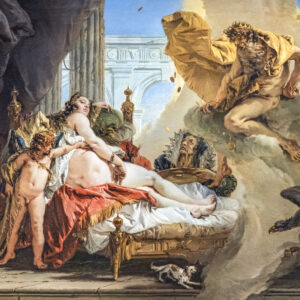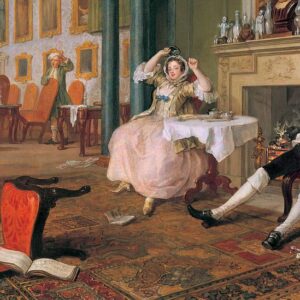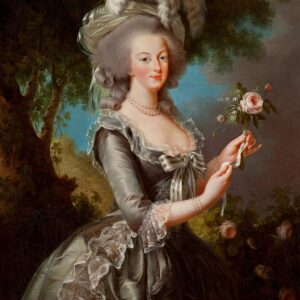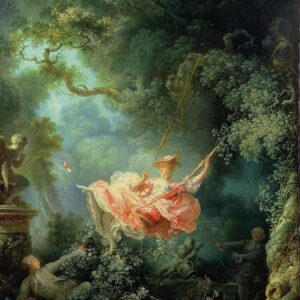François Boucher (UK: /ˈbuːʃeɪ/ BOO-shay, US: /buːˈʃeɪ/ boo-SHAY; French: [fʁɑ̃swa buʃe]; 29 September 1703 – 30 May 1770) was a French painter, draughtsman and etcher, who worked in the Rococo style. Boucher is known for his idyllic and voluptuous paintings on classical themes, decorative allegories, and pastoral scenes. He was perhaps the most celebrated painter and decorative artist of the 18th century.
Boucher took inspiration from artists such as Peter Paul Rubens and Antoine Watteau.[6] Boucher’s early works celebrate the idyllic and tranquil portrayal of nature and landscape with great elan.[7] However, his art typically forgoes traditional rural innocence to portray scenes with a definitive style of eroticism as his mythological scenes are passionate and intimately amorous rather than traditionally epic. Boucher’s paintings of a flirtatious shepherd and shepherdess in a woodland setting, featured in The Enjoyable Lesson (The Flute Players) of 1748 and An Autumn Pastoral (The Grape Eaters) of 1749, were based upon characters in a 1745 play by Boucher’s close friend Charles-Simon Favart. Boucher’s characters in those paintings later inspired a pair of figurines created by the Sèvres Porcelain Manufactory, c. 1757–66.[8] Marquise de Pompadour (mistress of King Louis XV), whose name became synonymous with Rococo art, was a great admirer of his work.[9] Marquise de Pompadour is often referred to as the “godmother of Rococo”[9] and Boucher’s portraits were central to her self-presentation and cultivation of her image. For instance, Boucher’s ‘Sketch for a Portrait of Madame de Pompadour’, displayed in the Starhemburg room at Waddesdon Manor, acts as a surviving example of the oil preparation prior to the, now lost, portrait. In one hand she holds her hat, in the other she picks up a pearl bracelet with a portrait of the king – symbolising the relationship upon which her status depends.
Boucher’s paintings such as The Breakfast (1739), a familial scene, show how he was as a master of the genre scene, where he regularly used his own wife and children as models. These intimate family scenes are contrasting to the licentious style seen in his Odalisque portraits.
The dark-haired version of the Odalisque portraits prompted claims by the art critic Denis Diderot that Boucher was “prostituting his own wife”, and the Blonde Odalisque was a portrait that illustrated the extramarital relationships of the King. Boucher gained lasting notoriety through such private commissions for wealthy collectors and, after Diderot expressed his disapproval, his reputation came under increasing critical attack during the last years of his career.






















